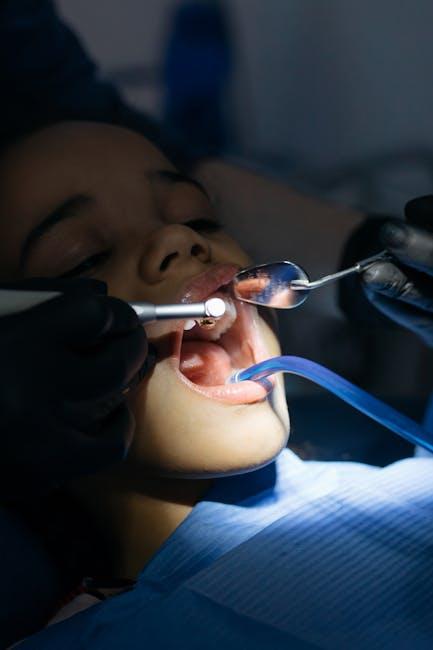1 in 3 Kids Has Dental Problems, Poll Finds – U.S. News & World Report
Recently, a troubling poll revealed that 1 in 3 children in the United States suffers from dental problems. This statistic underscores a growing public health concern with implications that reach beyond oral health alone. Parents, caregivers, dentists, and policymakers are urging for a stronger focus on pediatric dental care to combat this preventable issue.
The Scope of Dental Problems Among Children in the U.S.
The poll conducted by U.S. News & World Report highlights a stark reality: dental problems are affecting a significant portion of America’s youth. Childhood dental issues, including cavities, gum disease, and tooth decay, are no longer isolated cases but a nationwide challenge.
According to the poll findings:
- Approximately 33% of children aged 2 to 18 have untreated dental caries (cavities).
- Dental issues often go undiagnosed or untreated in low-income families.
- Early childhood caries can lead to difficulties in eating, speaking, and self-esteem problems.
This widespread problem not only impacts children’s health but also their academic performance and overall well-being.
Common Dental Problems Found in Children
To better understand the issue, here are the most common dental problems children face:
| Dental Problem | Description | Common Symptoms |
|---|---|---|
| Cavities (Tooth Decay) | Damage to the tooth’s enamel caused by acids from bacteria. | Toothache, visible holes, sensitivity to sweets or hot/cold. |
| Gingivitis | Inflammation of gums caused by plaque buildup. | Red, swollen gums that may bleed during brushing. |
| Early Childhood Caries | Severe decay in toddlers’ teeth, often linked to poor feeding habits. | Discolored or broken teeth, irritability. |
| Tooth Sensitivity | Discomfort or pain in teeth from hot, cold, or sweet triggers. | Sharp pain during eating or drinking. |
Why Are Dental Problems So Prevalent Among Kids?
Several factors contribute to the high incidence of dental problems in children across the U.S.:
- Poor Oral Hygiene: Children may not brush or floss properly or frequently enough.
- Diet: High consumption of sugary snacks and drinks fosters tooth decay.
- Lack of Dental Visits: Many families delay or skip regular dental checkups due to cost, fear, or accessibility.
- Socioeconomic Barriers: Low-income families often face challenges accessing dental care and education.
- Insufficient Fluoride Exposure: Either through water or toothpaste, fluoride helps prevent cavities, and some kids miss out.
Impact of Dental Problems on Children’s Overall Health
Dental problems extend beyond just the mouth. Ignoring oral health can lead to significant consequences, including:
- Nutrition Issues: Painful teeth can make eating difficult, sometimes causing poor nutrition.
- Speech Difficulties: Missing or painful teeth can impact a child’s ability to speak clearly.
- Low Self-Esteem: Visible dental issues often influence social interactions and confidence.
- Increased Risk of Systemic Diseases: Poor oral health is linked with greater chances of infections and chronic illnesses.
Benefits of Early Dental Care and Regular Checkups
Positive dental habits established early can lead to a lifetime of healthier smiles. The benefits of early and consistent dental care include:
- Prevention of Cavities and Gum Disease: Regular cleanings remove plaque and tartar buildup.
- Fostering Good Habits: Learning proper brushing and flossing techniques early sets a strong foundation.
- Early Detection: Catching dental issues before they worsen reduces treatment costs and discomfort.
- Establishing Comfort with Dentists: Comfortable dental visits reduce fear and anxiety for future appointments.
Practical Tips for Parents to Protect Their Kids’ Dental Health
Parents play a crucial role in preventing dental problems. Here are evidence-based tips to help keep your child’s smile healthy:
- Start Early: Clean your infant’s gums even before teeth erupt and begin brushing with fluoride toothpaste as soon as the first tooth appears.
- Supervised Brushing: Guide children to brush twice a day and floss once daily as soon as two teeth touch.
- Balanced Diet: Limit sugary snacks and drinks, and encourage water and tooth-friendly foods like cheese and vegetables.
- Regular Dental Visits: Schedule the first dental appointment by the child’s first birthday and maintain 6-month checkups.
- Fluoride Use: Use fluoride toothpaste and discuss fluoride treatments with your dentist.
- Lead by Example: Demonstrate good oral hygiene habits yourself.
Case Study: Success Story of Early Intervention
Meet Emma, a 5-year-old whose parents were proactive about her oral health. At her first dental visit at 1 year old, the dentist identified early signs of plaque buildup. With routine cleanings every six months, supervised brushing, and dietary modifications, Emma has remained cavity-free.
“We didn’t realize how critical early dental care was. Now, Emma loves her dentist visits, and her smile lights up the room,” says her mother.
This example highlights how early intervention can make a lifelong difference.
First-hand Experience: A Parent’s Perspective
“When my son started complaining about tooth pain, I thought it was just a phase. But a visit to our local dental clinic revealed multiple cavities,” shares Lisa, a concerned parent. “We learned the hard way how crucial regular dental care is. Now, we have a strict routine and my son’s oral health has dramatically improved.”
Lisa’s story echoes a common experience among families nationwide, emphasizing the need for awareness and action.
Conclusion: Combating Childhood Dental Problems Starts at Home
The poll’s revelation that 1 in 3 children in the U.S. faces dental problems should serve as a wake-up call for all families and health professionals. Childhood dental issues are preventable through education, routine care, and lifestyle choices. By prioritizing oral health from infancy, parents can help their children avoid pain, medical complications, and social challenges down the road.
Remember, a healthy smile creates a confident child. Start today by adopting these dental care practices and working closely with your child’s dentist. Together, we can turn the tide against the growing dental health crisis in America’s children.


